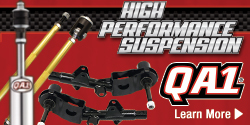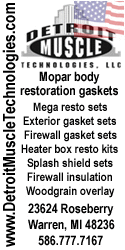- Local time
- 7:19 AM
- Joined
- Apr 13, 2012
- Messages
- 40,833
- Reaction score
- 153,074
- Location
- Granite Bay CA
The older I get, the more I question things.
Sometimes when someone asks a question on a web forum like this one, some “helpful” member tells them consult the FSM/Factory Service Manual.
Yeah, sometimes that does help…. But not always.
The last few days, A buddy and I have struggled with installing a windshield in a 69 Coronet.

The owner has had the car for over 10 years. After it was painted, he had a shop install the same windshield that was in the car when he bought it. They did use a new gasket though. Within a few years, the upper passenger side flap/locking strip got torn and the tear spread to the point where he wanted to pull the glass to replace the whole gasket.
No problem, Rich…I’ve done this before…

The car was here two days. We tried and failed to get it done right.... and had to call in a pro.
What the heck went wrong?
I wish that I had taken pictures but we both were elbow deep in frustration and simply didn’t feel like documenting the damned thing.
We both have watched videos and also read different segments on web forums where people got the job done. Heck, I have replaced a few windshields in a few A bodies including front and rear glass in 2 Dusters. I have had the windshield out of my Charger twice.

To be fair, my car still leaks which I’ll get to in a moment….
The most glaring topic for me here is the matter of getting the glass in the car, the glass laying in right, the locking strip laying down and the trim fitting as it should.
The Coronet had rust in the cowl panel before it was painted. The shop made repairs but missed something that may have not seemed important to them at the time. The cowl is the bottom barrier of the gasket and glass. It stands to reason that for the glass and rubber to fit and seal right, you’d need some means to keep them from slipping down toward the hood.
This red cowl came from a 1966 Satellite parts car:

I saved the fender aprons, core support and frame rails to use if I ever crunch my cars enough to need replacement!
Lookie at the “fence/channel”…

You can see evidence of where there was some type of sealant.
@CoronetDarter
Sometimes when someone asks a question on a web forum like this one, some “helpful” member tells them consult the FSM/Factory Service Manual.
Yeah, sometimes that does help…. But not always.
The last few days, A buddy and I have struggled with installing a windshield in a 69 Coronet.
The owner has had the car for over 10 years. After it was painted, he had a shop install the same windshield that was in the car when he bought it. They did use a new gasket though. Within a few years, the upper passenger side flap/locking strip got torn and the tear spread to the point where he wanted to pull the glass to replace the whole gasket.
No problem, Rich…I’ve done this before…
The car was here two days. We tried and failed to get it done right.... and had to call in a pro.
What the heck went wrong?
I wish that I had taken pictures but we both were elbow deep in frustration and simply didn’t feel like documenting the damned thing.
We both have watched videos and also read different segments on web forums where people got the job done. Heck, I have replaced a few windshields in a few A bodies including front and rear glass in 2 Dusters. I have had the windshield out of my Charger twice.
To be fair, my car still leaks which I’ll get to in a moment….
The most glaring topic for me here is the matter of getting the glass in the car, the glass laying in right, the locking strip laying down and the trim fitting as it should.
The Coronet had rust in the cowl panel before it was painted. The shop made repairs but missed something that may have not seemed important to them at the time. The cowl is the bottom barrier of the gasket and glass. It stands to reason that for the glass and rubber to fit and seal right, you’d need some means to keep them from slipping down toward the hood.
This red cowl came from a 1966 Satellite parts car:
I saved the fender aprons, core support and frame rails to use if I ever crunch my cars enough to need replacement!
Lookie at the “fence/channel”…
You can see evidence of where there was some type of sealant.
@CoronetDarter
Last edited:

















